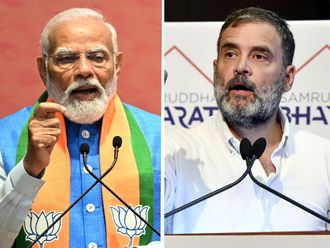Kolkata: Prime Minister Narendra Modi begins his maiden visit to northeastern states as the country’s premier on Saturday.
Modi will arrive in Guwahati on November 29 on a two-day visit and is expected to flag off the first train from Meghalaya and lay the foundation stone for the Bharibi-Sairang new railway line at a function to be held at Northeast Frontier Railway stadium.
He is scheduled to inaugurate year-long celebrations of the northeast’s leading English daily Assam Tribune completing 75 years and address a two-day conference of director generals of police of all states and Union Territories.
On Sunday, he will travel to Imphal, capital of Nagaland to inaugurate the internationally acclaimed Hornbill festival which also coincides with fifty years of statehood for Nagaland.
However, his visit has coincided with the 24th anniversary of the government imposing a ban on the United Liberation Front of Asom (ULFA), and has thus become a high security affair. “We are tightening security during this visit like never before, especially in view of the visit coinciding with ULFA’s protest day that the outfit has been observing since 1990. Also the threat of terror outfits like Jamaat-ul-Mujahideen Bangladesh (JMB) is quite real,” Pallab Bhattacharya, additional DGP (Special Branch), Assam Police told Gulf News over phone.
Modi’s visit comes at a time when protests are taking place against China creating a hydropower project on river Brahmaputra, the lifeline of the people of Guwahati. Though Chinese officials have maintained the dam would neither divert the flow of water nor affect India’s rights as a lower riparian state, the people of Guwahati are a concerned lot.
However, there have been concerns from various quarters including activists in Assam and political parties about the water flow. The concerns stem from the fact that China has plans for a 640 Megawatt (MW) dam at Dagu, 18 kilometres upstream of Zangmu and two other smaller projects in the middle reaches of Brahmaputra. Zangmu is one of the four projects planned on the Brahmaputra to generate a total of 2,000MW of hydro power. India and China have an understanding for sharing of hydrological data as well.
The river Bhramaputra which is known as Yarlung Tsangbo River in China also flows through Bangladesh and officials there also have voiced their concerns.
“The dam is a major concern as China may very well utilise it to curtail economic development in this part of India. Already India and China have a border dispute over Arunachal Pradesh and Ladak and the this may further fuel tensions between the two countries,” said Anant Dutta, a professor of international relations in Guwahati.












